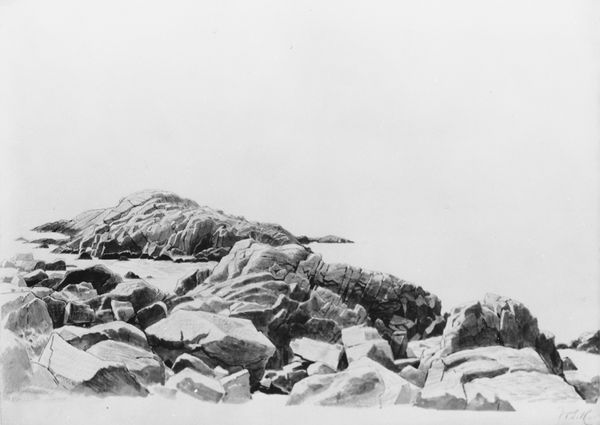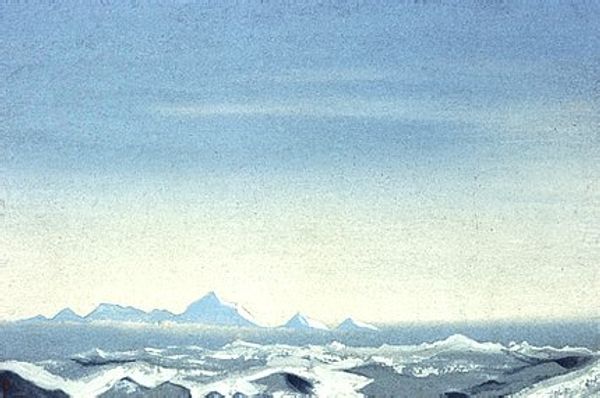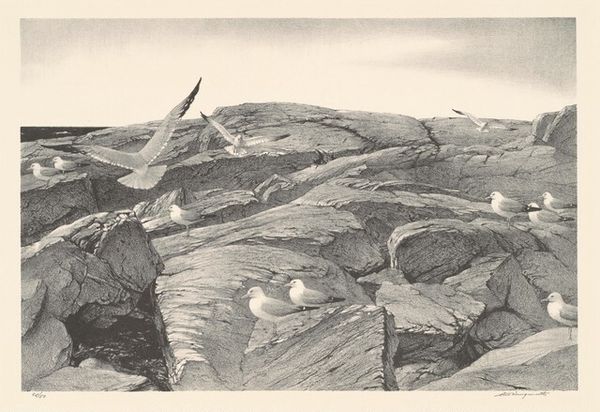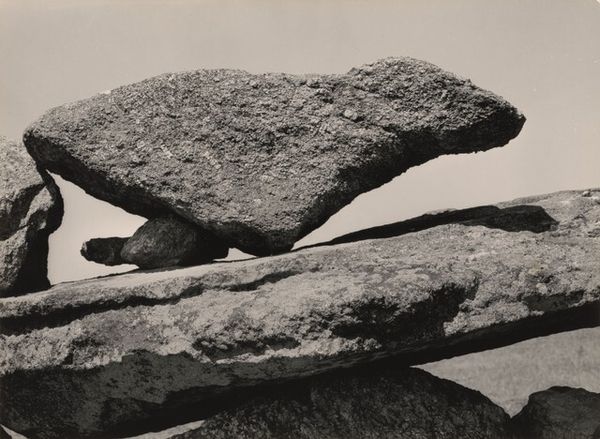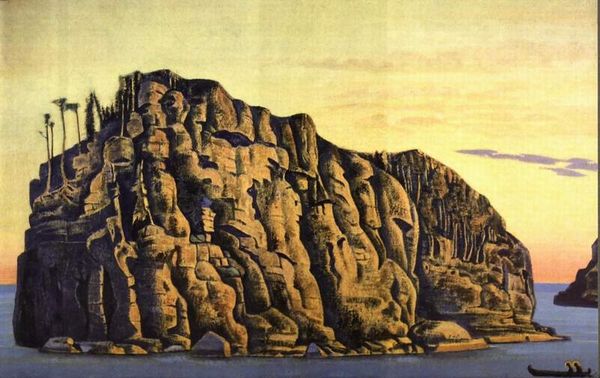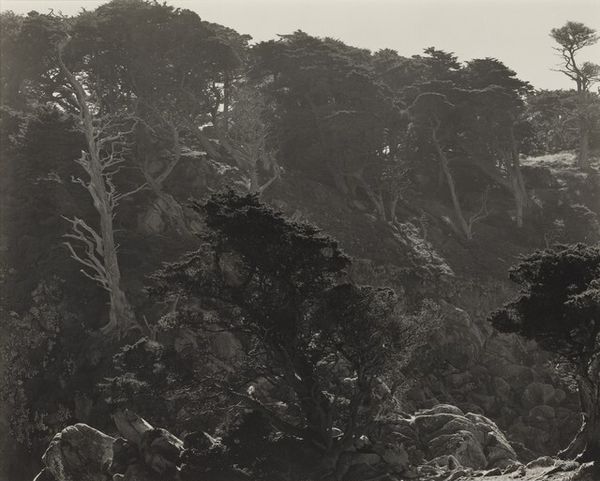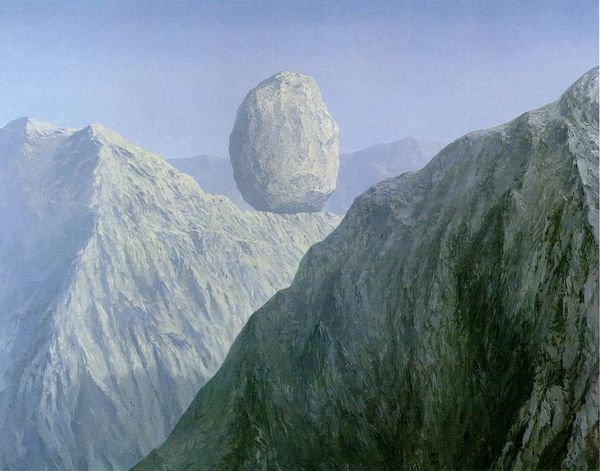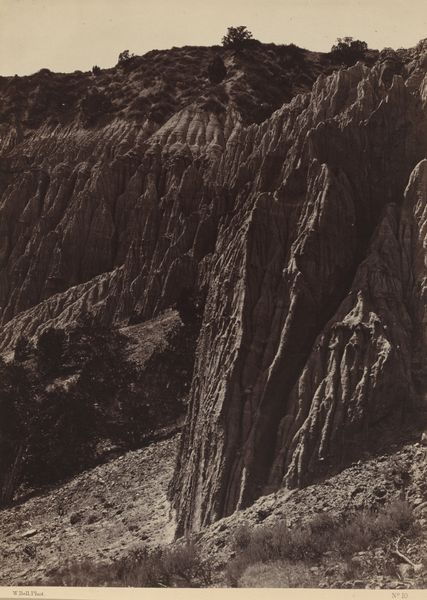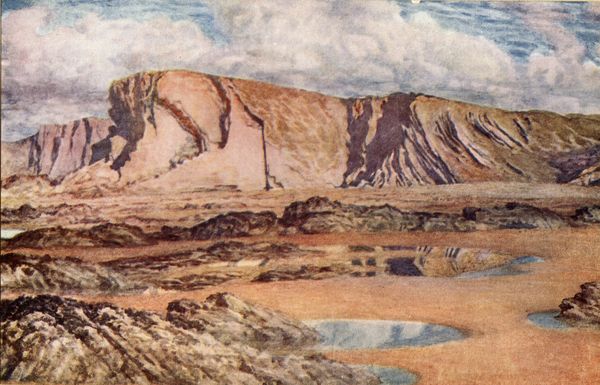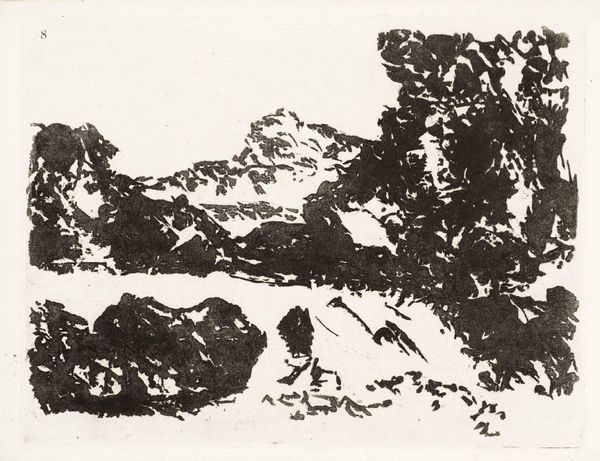
painting, watercolor
sky
painting
landscape
oil painting
watercolor
rock
realism
Dimensions: 63.5 x 102.2 cm
Copyright: Jamie Wyeth,Fair Use
Editor: We’re looking at Jamie Wyeth's "Gull Rock" from 1970, an oil and watercolor painting. The rock formation looms so large in the composition; it makes me feel really small, and also kind of calm, almost meditative. What stands out to you in this work? Curator: Immediately, it's the manipulation of texture. Notice how Wyeth uses the oil paint to build up a tactile surface on the rock, mimicking its craggy reality. But then, he contrasts that with the smoother washes of watercolor in the sky, creating an ethereal backdrop. Do you see how this opposition affects the overall composition? Editor: Yes, the stark contrast really does draw your eye to the rough texture of the rock. It's almost like the painting is split in two, between the solid and the atmospheric. Curator: Precisely. And it's the interaction of these formal elements, line, color, and texture, which create the overall dynamic. The eye travels across the surface, mapping the terrain. How does Wyeth manage depth without traditional perspective? Editor: It’s mainly through the texture, I think. The intense detail on the rock face gives it volume, whereas the sky recedes because it is just one muted wash of color. Curator: A keen observation. The light too, note how the play of light across the ridges accentuates the contours of the rock. The color palette is rather muted. Are you struck by how such a simple composition could create such a dramatic effect? Editor: Absolutely. By focusing so intently on the rock’s texture and the light, Wyeth transforms a simple landscape into something really powerful and kind of abstract. Thanks for pointing that out! Curator: My pleasure! Sometimes, limiting the field of vision allows the artist to explore fundamental aspects of form. A useful insight for your own work, I hope.
Comments
No comments
Be the first to comment and join the conversation on the ultimate creative platform.
